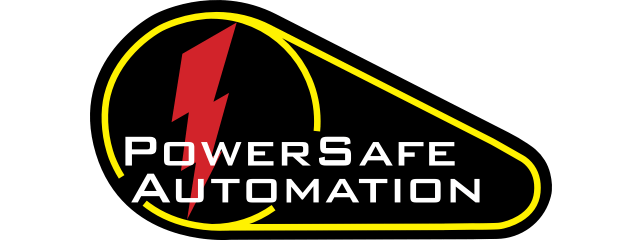In manufacturing, productivity often drives decision-making—but when it comes to machine safety, taking shortcuts can have devastating consequences. According to the Occupational Safety and Health Administration (OSHA), inadequate machine guarding is a leading cause of serious injuries, including amputations and fatalities. For Safety Managers, compliance isn’t just a legal obligation—it’s a matter of life and death.
This guide provides a comprehensive roadmap to machine guarding compliance under OSHA standards, while offering real-world best practices and actionable strategies for reducing risk in your facility.
Section 1: Why Machine Guarding Matters
Every year, thousands of manufacturing workers suffer injuries due to unguarded or poorly guarded machines. These injuries are not just statistics—they represent real people whose lives and livelihoods are impacted.
Common Risks of Poor Guarding:
-
Missing or bypassed guards
-
Inadequate lockout/tagout (LOTO) procedures
-
Lack of interlocks and emergency stops
-
Improper installation of safeguarding devices
When safety is treated like a gamble, the odds are never in your favor.
Section 2: Key OSHA Regulations for Machine Guarding
Understanding OSHA’s legal requirements is foundational for any compliance strategy.
OSHA 29 CFR 1910 Subpart O:
-
1910.212 – General Requirements for All Machines
-
1910.213 – Woodworking Machinery
-
1910.217 – Mechanical Power Presses
-
1910.219 – Mechanical Power-Transmission Apparatus
Additional OSHA Standards:
-
1910.147 – Lockout/Tagout (LOTO)
-
1910.333 – Electrical Work Practices
These regulations require employers to protect operators from hazards at the point of operation and other machine areas.
Section 3: Key ANSI Standards to Follow
While OSHA sets the minimum legal requirements, ANSI provides industry-driven best practices.
ANSI Standards You Should Know:
-
ANSI B11 Series – General machinery safety
-
ANSI B11.19 – Performance Criteria for Safeguarding
-
ANSI Z244.1 – Control of Hazardous Energy (LOTO)
-
ANSI Z535 – Safety Signs and Color Coding
-
ANSI/RIA R15.06 – Safety of Industrial Robots
Adopting these standards helps facilities exceed minimum compliance and create a safer workplace.
Section 4: Top 5 OSHA Machine Guarding Violations
These common pitfalls frequently result in OSHA citations and injuries:
-
Unprotected Points of Operation
-
Missing Guards on Rotating Parts
-
Failure to Replace Guards After Maintenance
-
Improper Conveyor Guarding
-
Inadequate Training on Guarding Protocols
Avoiding these issues requires vigilance, proper planning, and thorough training.
Section 5: How to Conduct a Risk Assessment
A formal risk assessment is the cornerstone of any machine safety program.
Risk Assessment Best Practices:
-
Use ANSI B11.0 or ISO 12100 frameworks
-
Identify all hazardous machine components
-
Document findings with photos and hazard levels
-
Involve maintenance, operations, and engineering teams
-
Reassess after any equipment changes or incidents
Consider hiring third-party safety experts for unbiased assessments.
Section 6: Choosing the Right Guarding Solutions
Different hazards require different types of guarding:
-
Fixed Guards: Ideal for high-risk zones with consistent operations
-
Interlocked Guards: Shut down equipment when accessed
-
Adjustable Guards: Suitable for multi-purpose machines
-
Self-Adjusting Guards: Respond dynamically to work material
-
Presence-Sensing Devices: Light curtains, laser scanners, and mats for advanced systems
Each guard type should be evaluated for the specific application and risk level.
Section 7: The Role of Lockout/Tagout (LOTO) in Guarding
LOTO is critical for safely servicing machines. It must be fully integrated with machine guarding systems.
Ensure LOTO Compliance:
-
Use OSHA §1910.147 as your guide
-
Develop LOTO plans specific to each machine
-
Train all employees—especially maintenance crews
-
Audit your LOTO process regularly
-
Include LOTO verification during equipment commissioning
Section 8: Training and Administrative Controls
Even the best guarding system fails without proper training.
Training Tips:
-
Conduct hands-on machine-specific safety training
-
Include topics on guard purpose, safe operating procedures, and emergency stops
-
Host regular refresher courses and toolbox talks
-
Document all training sessions for OSHA records
Administrative controls like signage, SOPs, and color-coded guards enhance your physical safeguards.
Section 9: Maintenance and Documentation Best Practices
Neglecting maintenance can lead to guard failure or OSHA violations.
Must-Have Maintenance Practices:
-
Create an inspection checklist for all machine guards
-
Track maintenance and revalidation of guards
-
Reinspect machines after any repairs or modifications
-
Document changes to safety systems
Good documentation protects your team and your company during audits and inspections.
Section 10: Dealing With OEMs and Minimum Compliance
Many new machines come with only baseline safety features—leaving Safety Managers to close the gaps.
What You Can Do:
-
Request full safety documentation before purchase
-
Perform post-installation risk assessments
-
Modify or retrofit guards to meet your specific application
-
Keep records of all guarding enhancements
Don’t assume “new” means “safe.”
Section 11: The Gotcha Stick: A Simple Guard Evaluation Tool
Use OSHA’s Table O-10 (guard opening scale) and a gotcha stick to verify guard spacing.
How It Works:
-
Test openings based on distance to the hazard
-
Prevent reach-through hazards
-
Use during audits or operator training
-
Ensure compliance with §1910.212(a)(1)
This low-cost tool offers high-impact results for any safety walkthrough.
Section 12: Beyond Compliance: Building a Safety Culture
Machine guarding isn’t just about avoiding fines—it’s about protecting people.
Build a Proactive Safety Culture:
-
Encourage near-miss reporting
-
Reward safety suggestions and improvements
-
Empower teams to pause unsafe operations
-
Make safety part of performance reviews
When safety becomes a shared responsibility, compliance becomes second nature.
Section 13: When You Receive an OSHA Citation
If cited by OSHA, take these steps:
-
Understand the citation and timeline
-
Post the notice near the violation
-
Correct the issue immediately
-
Document all abatement efforts
-
Request an informal conference if needed
-
Conduct a facility-wide guarding audit
-
Implement training and policy improvements
Use the citation as a catalyst for real change—not just correction.
Final Thoughts
Machine guarding is not optional—and it’s certainly not a gamble. As a Safety Manager, you hold the keys to creating a safer, more compliant, and more productive workplace. By following OSHA and ANSI guidelines, performing regular risk assessments, and investing in training and maintenance, you can build a facility where workers thrive and accidents are avoided.
Ready to Stop Gambling with Safety?
Our team at Power Safe Automation offers turnkey machine guarding solutions, risk assessments, and compliance audits tailored to your equipment and industry.
Contact Us to discuss performing a Machine Guarding Assessment



